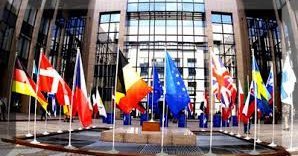To shed some light on the confusion surrounding the European Council and the Council of the European Union, it is important to understand what was enacted by the Lisbon Treaty on December 1, 2009.
Editor’s note: There is also the Council of Europe, an international organisation currently comprised of representatives of 47 European, Asian, and North American countries. It was created with the intention of promoting and upholding democratic legal standards throughout Europe, which was later expanded to include Northern Asia and North America. This institution is completely separate to the European Union; it cannot make binding laws.
Similarly to its Member States, the European Union’s capacity is divided via the separation of powers - legislative, executive, judicial, and audit. The Lisbon Treaty of 2009 created the European Council (EC) as a separate, competent, European Institution, which had previously been an informal group of representatives of EU Member States. Before 2009, there were no elections to the offices of the European Council, instead, the President of the Council of the European Union (CotEU) would also be President-in-Office of the European Council; the EC was a committee to which every Member State would issue one national representative.
The way in which this works:
Appointments to the highest position within the Council of the European Union are done via a rotating presidency system – representatives from the European Union came together to draft a list of the order in which Member States would produce the President of the Council of the European Union in 2007; this document may be found in the Official Journal of the European Union, dated January 1, 2007[1].
One Member State of the European Union holds the position of Head of the Council of the European Union for a period of 6 months, after which the position is transferred to the next Member State on the list found in the Journal mentioned above. In most cases, the highest serving Civil Servant of the Member State(i.e. President, Prime Minister), will resign from their national position and become the President of the CotEU. It is important to note that as the CotEU has specific executive and legislative powers, the more politically and economically influential Member States were excluded from the List with the intention of maintaining the democratic decentralization of power within the European Union.
Because the presidential term of the CotEU is restricted to a period of 6 months, 3 subsequent Member States on the List join together to create a Trio Presidency – these Member States negotiate a political agenda that is maintained by all three countries for the 18 month period that their representatives hold the position of President of the Council of the European Union.
Following the suggestion of multiple delegates during the drafting of the Lisbon Treaty, it was agreed that there should be a formal authority at the head of the European Council, thus, the notion of the permanent presidency was written in as well - the President of the Council of the European Union would no longer function as President-if-Office or head representative of the European Council; there would now be an individual representative of one of the Member States of the EU who would be elected to the position of Permanent President of the European Council - also the highest serving civil servant.
This change was meant to be monumental - the term of the presidency of the EC was set at 2 and a half years and the president’s responsibilities and privileges were outlined within the Lisbon Treaty. The president is now elected by a double majority by the representatives of the European Council, rather than agreed upon beforehand as the case with the CotEU. Herman Van Rompuy was the first Permanent President of the European Council, having been elected on December 1, 2009. Although the next President has already been elected - former Polish Prime Minister Donald Tusk, who has resigned his national post to take up the presidency - Van Rompuy’s term was extended for an additional 6 months and will end on November 30, 2014.
The question that remains is whether a formal Permanent President of the EC will have any more of an impact than the previous informal President-in-Office. Under Von Rompuy’s reign, this hasn’t been the case, and taking into consideration that former Polish PM Donald Tusk speaks neither English nor French, there will likely be more time spent translating conversations than making decisions. And although the European Council has been one of the 7 institutions of the EU since its creation in late 2009, it does not yet have its own resources and must heavily rely on the European Parliament and Commission - the same can be said about its president.
[1] http://eur-lex.europa.eu/LexUriServ/LexUriServ.do?uri=OJ:L:2007:001:0011:0012:EN:PDF
picture @euintheus.org

1. On 22 September 2014 at 08:04, by Emmanuel Replying to: Two European institutions, One president, and the Lisbon Treaty
Replying to: Two European institutions, One president, and the Lisbon Treaty
to the Editor: you write “There is also the Council of Europe, an international organisation currently comprised of representatives of 47 European, Asian, and North American countries.”
I don’t know where you get that from. The US and Canada are only observers. As for northern Asia, that means Azerbaidjan, Armenia, Georgia, but this is still “Europe”, in the “from the Atlantic to the Ural” acception.
More info on coe.int.
Follow the comments: |
|
